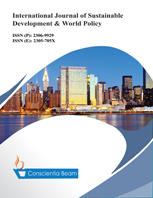An Econometric Planning Model of Urban Forestry as a Measure of Sustainability: A Matrix of Action and Change
DOI:
https://doi.org/10.18488/journal.26.2017.61.9.32Abstract
The urban forest holds several important positions within the built and unbuilt environments. Those positions include economic, health, sustainability, quality of life measures, and overall protection of the environment, including air, water, and soil. The points are highlighted by Wolf (2005;2007); McPherson (2005) and Rowntree and Nowak (1991). This research references the four socio-economic sectors; the public or government sector, for profit or market sector, philanthropic or nonprofit sector, and the household or private sector (Biggs and Helms, 2007). The common purposes and role of each sector with respect to the urban tree cover takes on importance as they interrelate with concerns for public health, economic viability, tree coverage, tree placement, ecological relationships, and public policy. Harris County and its 52 heterogeneous sub-governmental units serve as the study area and the base for the administration of a random internet-based survey. Additionally, the research used urban tree canopy data to relate socio-economics, household preferences, sustainability measures, and overall environmental consciousness to gauge the sectors’ connection to the urban forest. The research used multiple correlation analysis and regression modeling with secondary data. The research incorporated the results of the primary data collected, employed hierarchal linear modeling to address the perceived problem of a lack of concern for the urban forest and sustainability in respect to sectoral frame of reference in answering the survey questions. The element of willingness and receptivity serves as independent variables and overall environmental sustainability. The results can help policy makers promote sustainable initiatives that enhance the urban forest and protect the overall natural environment for the benefit of all, now and in the future.

